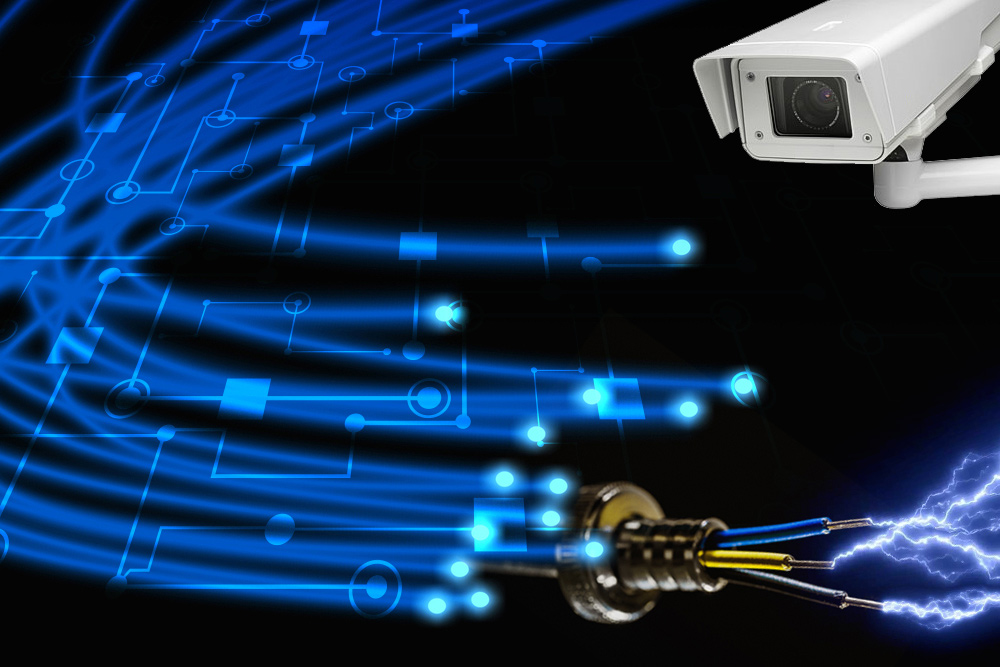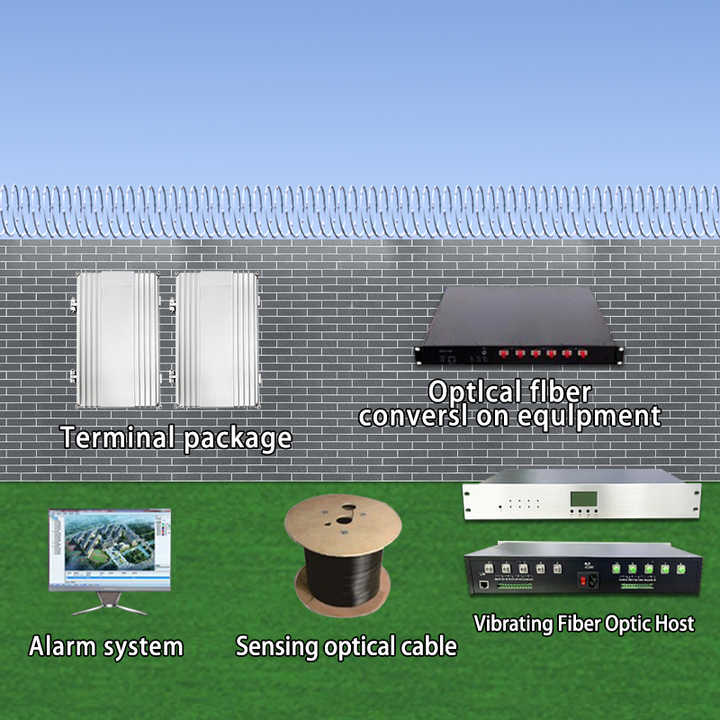The Advantages of a Fiber Optic Security System: Why It’s the Next Step of Secure Networks
The Advantages of a Fiber Optic Security System: Why It’s the Next Step of Secure Networks
Blog Article
Secure Your Home With Dependable Fiber Optic Safety Solutions
In an age where safety hazards are significantly sophisticated, the need for reliable defense services is vital. Fiber optic safety systems stand out by supplying extraordinary integrity and efficiency, leveraging innovative light transmission modern technology to boost monitoring capabilities. security fibers. Comprehending the ins and outs of fiber optic security can illuminate the course to guarding your building more effectively.
Benefits of Fiber Optic Protection
Fiber optic safety options provide a variety of benefits that make them progressively important in today's digital landscape. Among the most significant benefits is their superior data transfer capability, which permits the transmission of big quantities of data over cross countries without considerable signal degradation. This ability is specifically useful for safety and security systems that depend on high-definition video monitoring and real-time tracking.
Furthermore, fiber optic cable televisions are naturally much more safe and secure than standard copper wiring. They are unsusceptible to electro-magnetic disturbance, making them less prone to hacking or eavesdropping. This boosted safety is important for safeguarding sensitive information and maintaining the honesty of surveillance systems.
Moreover, fiber optics are a lot more long lasting and resistant to environmental aspects, such as dampness and temperature level fluctuations, making sure lasting dependability and minimized maintenance costs. The light-weight nature of fiber optic cords additionally streamlines installation processes, permitting for greater flexibility in system design.
Exactly How Fiber Optic Equipment Work
In contemporary safety applications, the operation of fiber optic systems relies upon the principles of light transmission through versatile glass or plastic fibers. These fibers are made to lug light signals over lengthy ranges with very little loss, making them suitable for transferring data associated to safety and security monitoring. The core of the fiber, bordered by a cladding product, makes sure that light signals remain included within the core through a sensation called overall internal reflection.
When incorporated into security systems, fiber optic cable televisions can transfer data from different sensing units, such as video cameras, motion detectors, and alarm systems, to a central monitoring terminal. The high data transfer ability of fiber optics permits for the transmission of big amounts of information simultaneously, allowing real-time surveillance and punctual reaction to potential hazards.

Sorts Of Fiber Optic Safety Solutions
Various kinds of fiber optic protection remedies have actually emerged to improve surveillance and protection across various atmospheres. One prominent service is fiber optic perimeter invasion discovery systems (PIDS), created to keep track of and safeguard residential property boundaries via the detection of vibrations and disruptions along fiber optic cable televisions. These systems give real-time notifies, making it possible for punctual feedbacks to unapproved accessibility attempts.
One more efficient option is fiber optic video monitoring. This modern technology leverages high-def cams attached via fiber optic cords to transmit video information over cross countries without considerable loss of top quality. This setup is particularly helpful in expansive locations, such as airports and commercial websites, where standard copper wires may fail.
Furthermore, fiber optic sensing units are increasingly utilized for environmental tracking, identifying adjustments in temperature, pressure, or acoustic signals that might suggest protection violations or unsafe problems. These sensors provide high sensitivity and accuracy, making them suitable for essential framework protection.

Installation and Maintenance Tips
Reliable setup and upkeep of fiber optic security resource solutions are critical for guaranteeing their optimal efficiency and durability. Fiber optic cable televisions must be transmitted safely, preventing sharp bends or twists that can jeopardize their integrity.
During installment, it is a good idea to conduct detailed screening of the system to confirm that all elements are working properly. Regular maintenance checks should be scheduled to evaluate the fiber optic cable televisions for any kind of indicators of wear or damages, as well as to make sure that connections stay secure. Cleaning up the connectors regularly is also essential to stop signal loss as a result of dirt or particles.
Furthermore, maintaining an updated inventory of mounted elements and their requirements can help with less complicated troubleshooting and upgrades. By sticking to these installment and upkeep tips, home proprietors can make the most of the efficiency of their fiber optic security options, guaranteeing a dependable defense versus possible hazards.
Comparing Prices and Performance
When examining fiber optic safety and security solutions, understanding the equilibrium in between costs and performance becomes vital (security fibers). Organizations must take into consideration the upfront financial investment, continuous maintenance expenditures, and the long-lasting value these systems give. While fiber optic systems might call for a higher first installation cost contrasted to typical copper electrical wiring, their resilience go right here and reduced vulnerability to electromagnetic interference typically equate to lower maintenance prices over time
Effectiveness is another important variable; fiber optic protection systems supply boosted data transmission speeds and enhanced reliability. They can cover larger ranges without signal destruction, making them suitable for expansive homes or remote locations. The high bandwidth capacity supports sophisticated visit the website security applications, such as high-def video clip monitoring and real-time monitoring, which are crucial for detailed protection management.
Eventually, the choice in between cost and performance ought to be guided by certain safety demands and run the risk of analyses. Organizations must examine their unique needs, considering aspects like residential property size, protection risks, and technical advancements. By carrying out a comprehensive cost-benefit evaluation, stakeholders can make educated choices that align with their safety objectives while making certain a sound investment in fiber optic innovation.
Verdict
In final thought, fiber optic protection remedies use considerable advantages in terms of efficiency, integrity, and resistance to ecological disturbances. Eventually, the adoption of fiber optic technology represents a forward-thinking method to protecting residential or commercial properties against advancing protection dangers.
Report this page